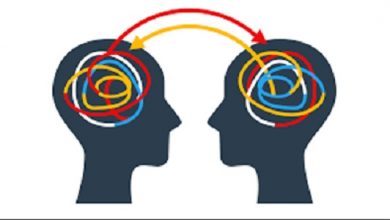Types of care and parts of the nervous system involved Other types
Knowing the different types of care allows us to identify the aspects that compose and affect it in order to reinforce each of them. Attention is defined as the ability to focus when performing an activity, although in everyday life the most used term is inattention.
We currently live in a constantly changing society that requires adequate adaptation to a series of stimuli (electronic equipment, advertising, among others) to minimize the presence of attention disorders.
However, attention is a cognitive brain-based process, for this reason, an individual does not have attention due to being distracted, they simply have it elsewhere.
Attention, a complex function
The most complex function of the brain is attention, the definition of which is not fully established and accepted by all specialists. It is a function where the frontal lobe integrates information from the nervous system to recognize stimuli, process information, and focus on a goal.
The type of care that will be used will depend on the relationship established with the work, personal or social environment and the peculiarities of each activity.
What parts of the nervous system are involved in attention?
- Parietal lobe: It is responsible for the spatial processing of stimuli and the allocation of resources for a specific activity.
- Frontal lobe: it is responsible for choosing the answers and the steps to develop a plan that allows the development of an action.
- Ascending reticular system: it is capable of receiving different stimuli, peripheral information being processed as it travels through the brain stem.
What are the types of care?
Considering the most important criteria, care can be classified as follows:
1. Taking into account the sensory modality.
1.1. visual attention
It is related to spatial ability, which allows discovering complex stimuli in the visual field.
1.2. hearing care
Corresponds to the ability we have to choose and focus attention on an auditory stimulus.
2. Taking into account its amplitude and direction
2.1. Outpatient care-wide
This attention is focused on a large number of stimuli foreign to the individual. For example, when a soccer player attacks, he raises his head and looks at the position of his teammates to make a safe pass.
2.2. External care-reduced
Attention is focused on a smaller number of stimuli foreign to the person and related to concentration. For example, if a person tries to shoot an arrow and concentrates all his attention on the end point or target.
2.3. In-house-wide care
For this attention, the individual concentrates on a large number of stimuli that occur within his own organism. For example, a person wants to describe what happened in one day and internally examines what happened with her emotions.
2.4. in-house care-reduced
This attention is focused on a small number of stimuli that occur in a person’s body. For example, when a soccer player is experimenting with a new shot and she has to focus on the movements of her foot and not on the environment on the pitch.
3. Taking into account the motor and physiological manifestations
3.1. open attention
Attention is focused with its sensory receptors on the orientation of the source of attention. For example, when we talk to someone we pay attention to their verbal and non-verbal language.
3.2. covert attention
For this type of attention, the focus and sensory receptors are dissociated. For example, when we talk to a person but in reality we are attentive to the computer.
4. Taking into account the attitude of the individual
4.1. voluntary attention
It occurs when a person actively and consciously focuses on directing their attention to a stimulus.
4.2. involuntary attention
For this case of attention, the person consciously does not make an effort, being the stimulus (internal or external) that directs the attention.
5. Other types of care
5.1. Selective or focused attention
It is the ability to select and focus attention to a certain stimulus or activity.
5.2. divided attention
It is the ability to attend to and process two stimuli simultaneously.
5.3. alternate attention
It occurs when the focus of attention is shifted from one stimulus to another.
5.4. Sustained attention
It is the ability to use attention over a long period of time.
5 .5. Concentration
It is the capacity that an individual has to centralize their attention in a sustained and constant way.




